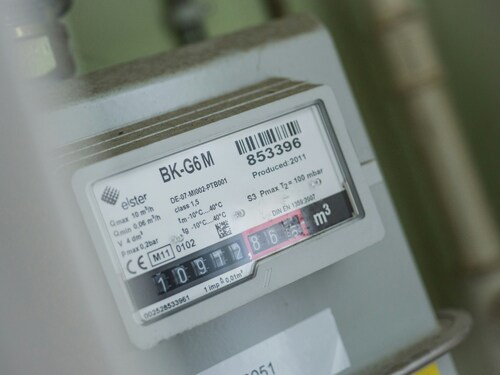Running a business costs money—and electricity bills can get high fast. Want to cut those bills down? You’re in the right place. Let’s break down business electricity rates in a way that’s easy to understand and helps you save.
What Are Business Electricity Rates and Why Do They Matter?
Business electricity rates are how much your company pays for using electricity. Just like you pay for power at home, businesses also pay—but their prices work differently.
Unlike homes, businesses may pay more during busy hours of the day. Rates change based on your company size, time of use, and even location. That’s why it’s super important to understand these rates. If you choose the right plan, your business could save thousands of dollars every year!
Why Do Businesses Pay Different Electricity Rates?
Businesses use more electricity than homes. Think of lights, computers, machines—all using power all day long. Because of that, energy companies charge businesses in a few different ways:
- Unit Rate: This is how much you pay per unit (kWh).
- Standing Charge: A daily fee just to stay connected.
- Peak Charges: Higher prices when everyone else is using electricity.
Now, if you run a bakery and bake in the early morning, you might pay less than someone running machines at 6 PM—when rates spike. That’s why your usage time also matters.
According to the U.S. Energy Information Administration (EIA), in 2023, the average commercial electricity price was 12.55 cents per kilowatt-hour. But in some states like Hawaii or California, that number goes way up. Meanwhile, Texas or Idaho could be much cheaper. That’s a pretty big difference!
Example: A Tale of Two Coffee Shops
Let’s imagine two coffee shops:
- Coffee Shop A pays $0.13 per kWh, uses energy-saving equipment, and operates mostly in the morning.
- Coffee Shop B pays $0.15 per kWh, keeps high-powered blenders running all day long, and leaves lights on after hours.
After a year, Shop A might spend around $7,800 on power. But Shop B? Closer to $10,000.
That’s over $2,000 saved just from better electricity choices!
How Can You Lower Your Business Electricity Rates?
Luckily, there are smart and easy ways to cut back on costs.
1. Shop Around for a Better Energy Plan
Don’t just stick with the first energy provider. In many places, you can choose your electricity supplier.
Use business electricity comparison tools to check:
- Who offers the lowest unit rate
- If they charge high standing fees
- Contract terms (some lock you in for years!)
According to a 2023 survey by Ofgem, over 40% of small businesses who switched providers saved between 10–20% on their bill. That’s easy money back in your pocket.
2. Choose a Fixed Rate Plan
A fixed rate means your price doesn’t change during the contract. This is helpful when prices go up in the market—which they often do.
Let’s say you’re running a small print shop. Your energy stays the same each month. If prices jump, your rate stays locked. That’s peace of mind.
3. Reduce Your Energy Use
Sounds simple, right? But every light left on or computer running overnight counts.
Here are quick wins:
- Switch to LED light bulbs (they use 75% less energy)
- Set timers for lights and heating
- Unplug machines or equipment when not in use
- Insulate your building (keeps heat in and lowers power use)
A small business in Chicago saved 18% on their monthly bill just by using motion sensor lights and updating old equipment.
4. Use Energy During Off-Peak Hours
Some providers offer better rates at night or early morning. These are known as “time-of-use” plans.
If your business can shift some work outside of busy hours, you can save big. For example:
- Run machines early in the morning or late at night
- Use automated scheduling for devices
- Avoid using heating or air conditioning between 5–8 PM
A small laundromat in Dallas saved $1,400 in one year by running machines at night under a time-of-use plan.
What to Watch Out for When Picking a Business Electricity Plan
Not all deals are good ones. Some energy suppliers may offer low rates but hide fees in the small print.
Hidden Fees
- Early exit fees
- Meter reading charges
- Extra fees for paper billing
Always read the terms before signing anything.
Long Contracts
Some plans tie you up for five years. Ask yourself—will my business grow? Will I move locations? Try to stay flexible.
Automatic Renewals
Many contracts renew without asking you first. Set a reminder a month before your contract ends. That way, you can compare plans and switch if needed.
What If You Run a Tiny Business?
Even if you only run a small home-based business, it’s still worth checking your electricity rates.
Why?
Small businesses make up over 99.9% of all businesses in the U.S., according to SBA data. If each could save $500 a year just by switching rates, together that’s billions saved!
You may be able to claim part of your home electricity as a business expense too. Talk to an accountant to make sure you’re doing that right.
The Future of Business Electricity: Greener and Smarter
More businesses are jumping on the green energy train. Why?
- Customers care about the environment.
- Solar panels and green tariffs are more affordable today.
- Governments offer tax breaks for using clean energy.
In the UK, nearly 60% of small business owners said sustainability helped their brand image. Green energy plans can even come with lower business electricity rates, especially if you produce your own power (like with solar panels).
Smart meters are also becoming the norm. These give real-time updates on energy use—and help you find the money leaks.
Quick Recap: How to Lower Your Business Electricity Costs
- Compare providers to find better rates.
- Choose fixed or time-of-use plans to avoid paying peak prices.
- Cut down energy use by switching equipment, lights, and habits.
Want a bonus tip? Call your current provider and ask, “Can you offer me a better deal?” You’d be surprised what asking can do!
Final Thoughts
Lowering your business electricity rates doesn’t need to be hard. Start small, stay smart, and your savings will add up quickly.
Here’s what you can do today:
- Check your current bill and see your rate and usage.
- Use an online comparison tool to shop around.
- Make small changes at work—turn off that extra light!
That’s it. Start now, and power up your profits while powering down your bill.



